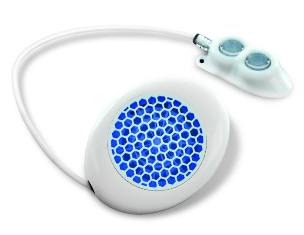Artificial pancreas gives hope for injection-free diabetes
19 Jan 2011
An artificial pancreas being developed at De Montfort University could revolutionise the treatment of diabetes and put a stop to daily injections.
Professor Joan Taylor from De Montfort University in Leicester in the UK is developing a device that would be implanted into the body between the lowest rib and the hip and would be topped up with insulin every few weeks.
Glucose levels are normally controlled by the hormone insulin that is released by the pancreas when required. People who have diabetes either do not produce insulin, produce insufficient insulin or the insulin they do produce does not work properly. The condition affects millions of people across the world.
The artificial pancreas is undergoing pre-clinical trials and is made of a metal casing containing a supply of insulin that is kept in place by a gel barrier invented and patented by Professor Taylor.
When glucose levels in the body rise, the gel barrier starts to liquefy and lets insulin out. The insulin feeds into the veins around the gut and then into the vein to the liver, mimicking the normal process for a person with a healthy pancreas. As the insulin lowers the glucose level in the body, the gel reacts by hardening again and stopping the supply.
This means the right amount of insulin is released automatically every time the body needs it, putting an end to daily injections and the guesswork often involved for diabetics when trying to control blood glucose levels that can lead to health problems such as heart disease, kidney disease, strokes and blindness.
If successful, the device would be a simple and low-cost solution to the problem facing all diabetics. The system has no moving parts or batteries and would be implanted internally, making it invisible on the outside.
A prototype made of plastic has been produced and demonstrates how Professor Taylor believes the device will look when it is ready to market. She hopes to move on to clinical trials within the next few years. If these prove successful then the system could be available in five to 10 years.

Professor Joan Taylor with an artificial pancreas that
she
developed. The device could be implanted into
the body and topped up
with insulin every few weeks.
Photo credit: Brian Bell
Professor Taylor said: "I realised that I could use a certain protein to make a gel that would react with glucose. When exposed to the body fluid around the internal organs, the gel reacts according to the amount of glucose present.
"High levels cause the gel to soften and release insulin into the blood stream, once the glucose levels return to normal the nature of the gel causes it to re-solidify, perfectly controlling the insulin dose," she added.
"The device will not only remove the need to manually inject insulin but will also ensure that perfect doses are administrated each and every time. By controlling blood glucose so effectively, we should be able to help reduce related health problems.
"It may be that the artificial pancreas is only suitable for people with type-one diabetes, this will only be known when we reach the clinical trial stage," said Professor Taylor.